With the new ETV214i/216i series, Jungheinrich answers the market demand for economically deployable reach trucks with good characteristics. The newcomer performs at the level of its predecessor’s efficiency model and adds a number of attractive pluses. The standard has clearly been redefined.

As a user, why choose a reach truck that offers too much for its job? Wouldn’t you be better off with a truck that is more favorably priced but keeps all it promises? Those questions were the starting point of the development of Jungheinrich’s new ETV2i-series. Analysis of over 14,000 FMS (Fleet Management System) data showed that 50% of users have reach truck deployments that do not call for maximum performance or hugely long driving times. With two models, the 214i and the 216i (1.4 and 1.6 tonnes lifting capacity), the German manufacturer brings a suitable truck for that. For those who do have a 24/7 deployment or otherwise require maximum performance, the Jungheinrich 3i-series will be launched in May 2025.
This test focuses on the totally redesigned ETV214i. At first glance, it closely resembles the existing ETV216i model with integrated li-ion battery, but the differences soon become apparent. The new truck has a 230 mm lower cabin floor and the seat height is also correspondingly lower. With a step height of only 420 mm, you easily walk into the cab, the extra step is no longer necessary. The same FMS analysis shows that reach truck drivers in this less intensive market segment get on and off more often to do additional work. In that case, a lower build height and large foot area are very pleasant.
The new ETV2i-series owes its lower build primarily to the 100 mm smaller drive wheel coupled to a slightly lighter drive motor. Together with the newly configured li-ion modules, this makes for a low and spacious floor without obstacles and plenty of cabin space. To compensate for the potentially higher wear of the smaller drive wheel, a new type and much more wear-resistant polyurethane called Powerthane Plus has been found. The drive wheel cover plate makes maintenance for service easier and provides a neater look to the truck. Any paint damage is much easier to repair.
Does a lower seat also mean less visibility of surroundings and support legs? No! The ETV 2i trucks have retained their lower chassis edges and the air-suspended Grammer MSG75 seat also allows you to sit 40 mm higher without losing proper cushioning. In addition, as an option, Jungheinrich offers easy-to-attach yellow protective covers for the load wheels that both protect the wheels and provide clear contrast for better visibility of the support arms. For increased safety, the shoulder protection is improved and has become more rigid.
The panoramic roof has been made slightly wider, providing more upward visibility. The masts of the new series have remained unchanged. The maximum lifting height of the ETV2i-series is 10,700 mm with a residual capacity of 900 kg. Those working at high altitudes benefit from the clear and interference-free view of the optional digital fork camera.
Another highlight of the new ETV2i-series can really be taken literally. On top of the cabin roof, we find an LED light system with bright white daytime running lights that make the trucks extra visible. When the driver indicates direction when cornering, they flash orange and when braking they are red. An indication of charging status with a pulsing colour to show how far the battery is charged may also follow in the near future.
The ETV2i-series features updated li-ion battery modules that can be ordered in two sizes: 230 Ah or 460 Ah. The modules are cleverly integrated, have a separate link to the BMS (Battery Management System), creating more layout options for engineers. The choice of battery size thereby depends on the desired operating time and the willingness to give intermediate charges. Thereby, the optional built-in 35Ah charger offers all possibilities to charge at any 230V socket. Of course, charging is also possible with Jungheinrich’s existing range of li-ion fast chargers.
In the cab, the use of the new concern display stands out. With an improved layout, nice colour scheme and clearer data such as lift height and weight indication, it offers better information to the driver. For example, it has a digital load diagram that warns of possible fork overloads.
The steering console is adjustable in depth as standard; height adjustment is also available as an option. The steering wheel has remained unchanged, as have the 180/360-degree steering controls and the highly predictable steering behaviour that has characterized Jungheinrich reach trucks for many years. New is the improved storage compartment in the area under the armrest. This now also accommodates our A4 writing/clipboard without slanting.
By the way: in terms of possible options, the ETV2i series offers everything that the current ETV216i and upcoming ETV3i series can offer except for the loweringPRO rapid descent system and battery size above 460 Ah. So from an air suspension seat, digital fork camera, to USB connections, FloorSpots and assistant systems, everything is available.
And then there is the performance of the new ETV2i-series. We can be brief about that: it is almost identical to the performance of the existing ETV-series in its ‘efficiency’ version. The scores are above average compared to the overall reach truck segment, but clearly lower than the top scores of the Drive&Lift Plus version of the ETV216i. These are also not the goal at all, as the ETV3i-series will soon be on the market for that.
We arrive at a practical deployment time of almost 5 hours with the 230 Ah li-ion module and double that if we were to choose the 460 Ah. Thanks to the built-in 230V charger, interim recharging is child’s play. Of course, whether this option is the right one depends entirely on the deployment and desired usage routine.
The choice of the 230 Ah li-ion module makes the purchase or leasing of the ETV2i-series especially economically attractive. In addition, for those who want a super-compact reach truck, a ‘Slim’ variant of the ETV214i is available. This has a further 100 mm shorter l2 size because the redesigned storage compartment under the armrest has been shortened.
Thanks to its low floor height, the new 2i-series is very accessible and offers the driver all the benefits of good ergonomics. The added advantage of the lower seat is that you experience less driving movements. Combined with the (optional) air-sprung seat, this results in a nice workplace. Despite the lower seating position, all-round visibility is fine and the optional yellow wheel covers are an asset. As a scarce downside, we mention the sometimes somewhat inconsistent unloaded lowering speed and the truck moving back and forth when lowering the loaded fork. This seems to be caused by an incorrect parking brake sequence that has been successfully changed now by the factory.
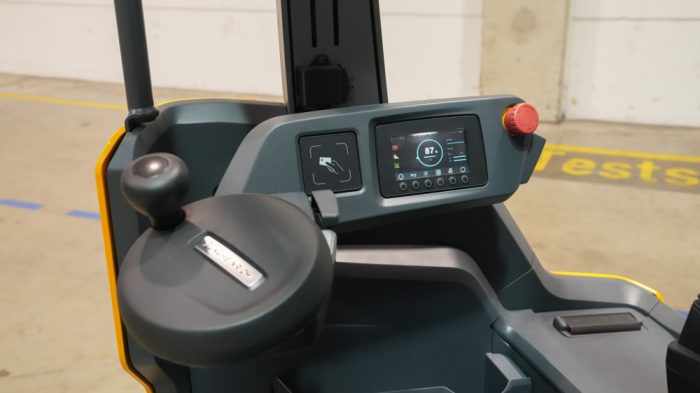
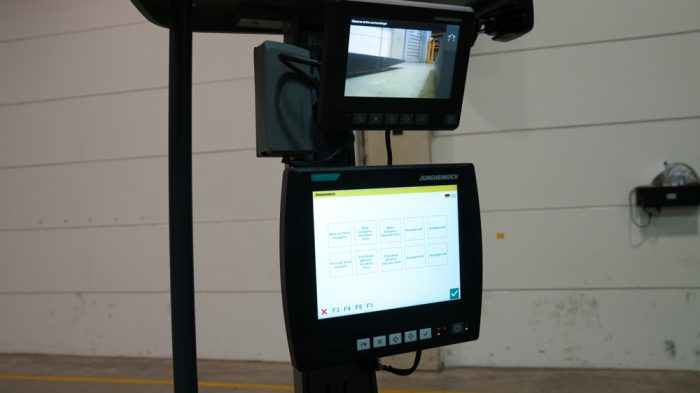
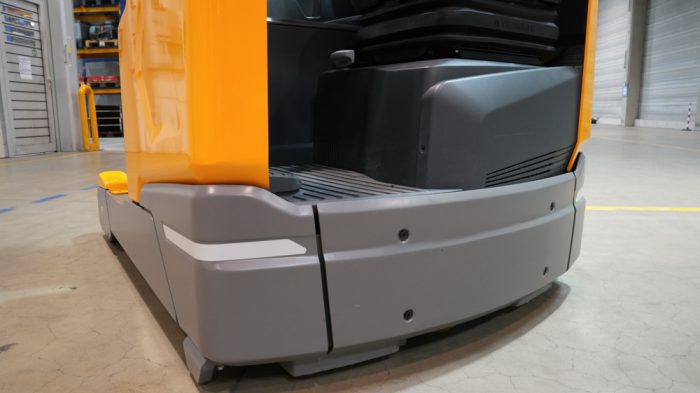
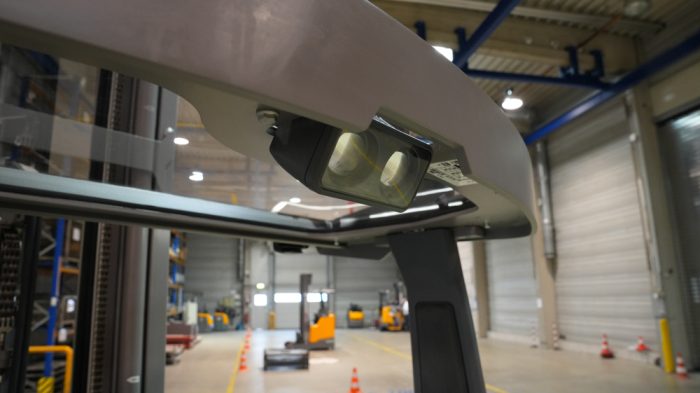
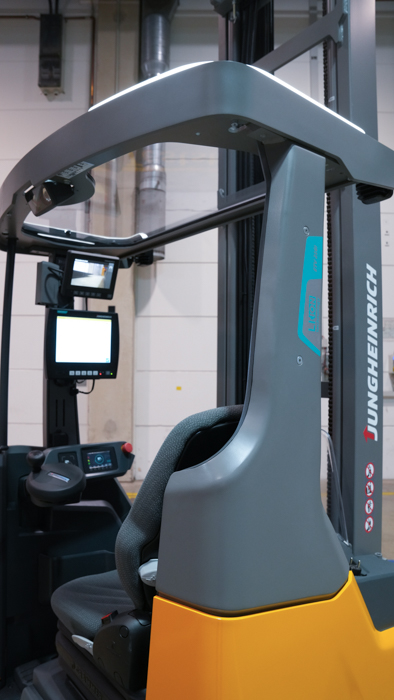
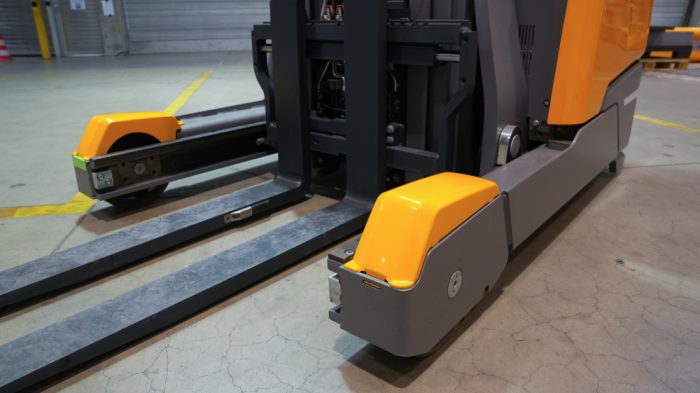
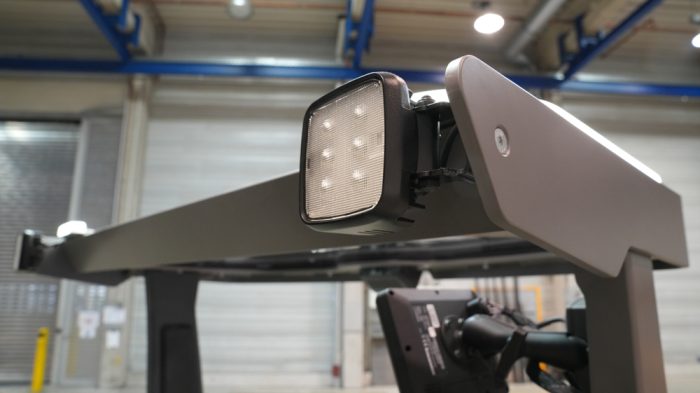
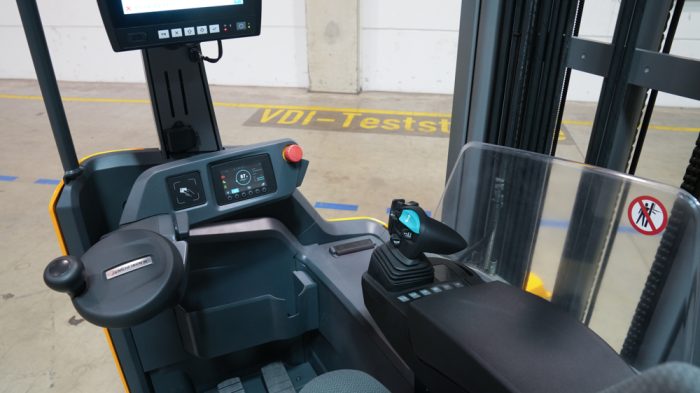


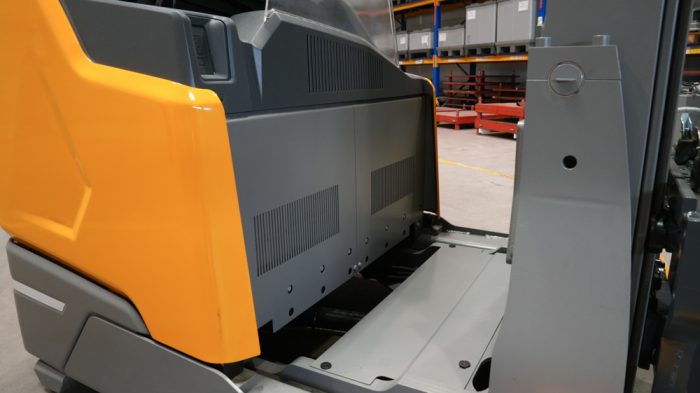
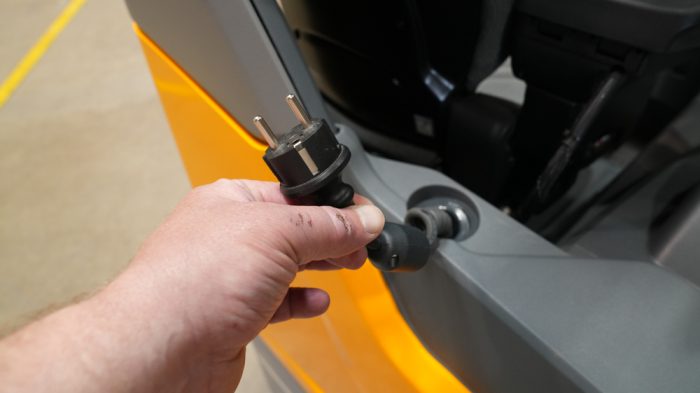
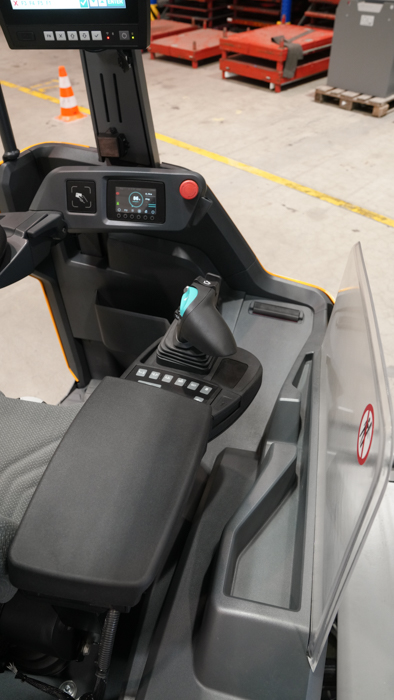
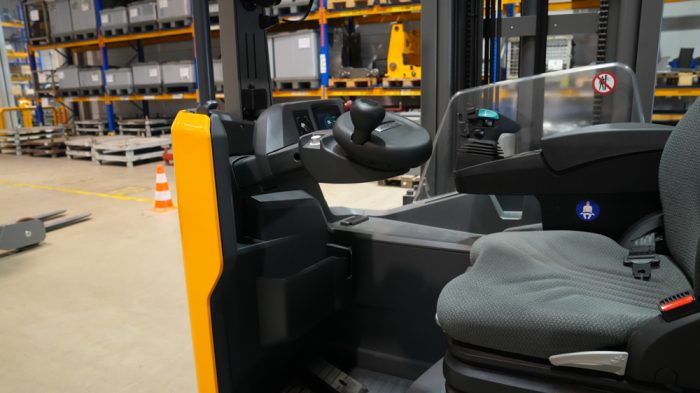
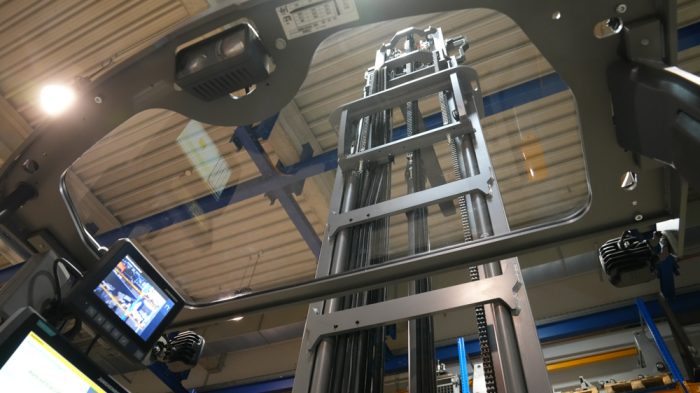
(Text and photos: Andersom Testing, Mark Dohmen and Theo Egberts)
Tags:
Andersom testing, ETV214i, Jungheinrich ETV214i, Reachtruck, Reachtrucks
All in the Family With three ranges divided between...

Recently Jungheinrich exclusively showed Logistics Insi...

Successful continuation EP Equipment developed the JX1...